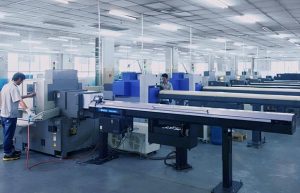What Is CNC Swiss Turning?
CNC Swiss turning, also known as Swiss-style machining or Swiss screw machining, is a specialized form of precision machining renowned for its ability to produce small, intricate, and high-precision components with exceptional accuracy and efficiency. Let’s delve into the details of CNC Swiss turning to understand its principles, capabilities, and applications.

Principles of CNC Swiss Turning
Sliding Headstock
One of the defining features of CNC Swiss turning is the sliding headstock design, where the workpiece is held in a collet and fed through a guide bushing. This setup provides excellent support and stability for long and slender parts during machining.
Simultaneous Machining
CNC Swiss turning machines are capable of performing multiple machining operations simultaneously, including turning, milling, drilling, and tapping. This simultaneous machining capability enhances productivity and reduces cycle times.
Key Components
Guide Bushing
The guide bushing ensures precise and stable guidance of the workpiece during machining. It minimizes vibration and deflection, allowing for accurate machining of long and slender parts with tight tolerances.
Live Tooling
CNC Swiss turning machines are equipped with live tooling capabilities, enabling additional machining operations, such as milling, drilling, and cross-drilling, without the need for secondary setups. Live tooling adds versatility and flexibility to the machining process.
Applications
Miniature Components
CNC Swiss turning is well-suited for producing miniature components with diameters as small as a few millimeters. These components often include medical implants, aerospace fasteners, electronic connectors, and watch components.
High-Precision Parts
The inherent accuracy and repeatability of CNC Swiss turning make it ideal for manufacturing high-precision parts with tight tolerances and complex geometries. These parts are critical components in industries such as medical devices, automotive, and aerospace.
Advantages
Exceptional Precision
CNC Swiss turning machines can achieve high levels of precision and accuracy, often within microns. This precision is essential for producing parts with intricate features and tight tolerances.
High Efficiency
The simultaneous machining capability of CNC Swiss turning machines allows for reduced cycle times and increased productivity. It minimizes idle time and maximizes throughput, resulting in cost-effective production.
Reduced Material Waste
CNC Swiss turning minimizes material waste by efficiently machining parts from bar stock. The close proximity of the cutting tools to the workpiece and the ability to perform multiple operations in one setup optimize material utilization and reduce scrap.
Conclusion
CNC Swiss turning is a sophisticated machining process renowned for its ability to produce small, intricate, and high-precision components with exceptional accuracy and efficiency. With its sliding headstock design, simultaneous machining capabilities, and versatility, CNC Swiss turning remains a preferred choice for manufacturing complex parts in various industries.
For more information on CNC Swiss turning, visit CNC Swiss turning.